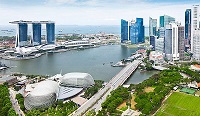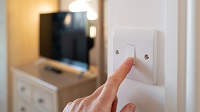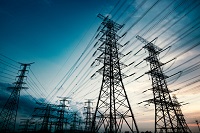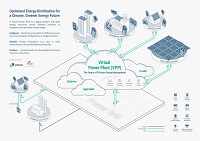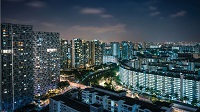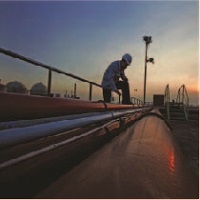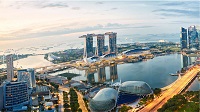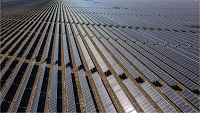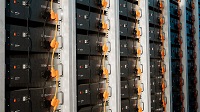A Singapore Government Agency WebsiteHow to identify
Official website links end with .gov.sg
Government agencies communicate via .gov.sg websites
(e.g. go.gov.sg/open).Trusted websites
Secure websites use HTTPS
Look for a lock ( )or https:// as an added precaution. Share sensitive information only on official, secure websites.
We thank Forum writers Philip Kwang (Lighter-coloured panels could ease heat effect, May 1), Peter Heng (Floating solar farms may do more harm to environment than good, April 28) and Leslie Lim (Installing rooftop solar panels may not result in much energy savings, April 24) for their interest in Singapore’s solar deployment efforts.
Solar is Singapore’s most viable renewable energy source. As set out in the Singapore Green Plan, Singapore aims to achieve solar energy deployment of at least 2 gigawatt-peak by 2030. This will meet around 3 per cent of our projected total electricity demand in 2030 and generate enough electricity to power around 350,000 households yearly.
While solar panels do heat up under direct sunshine, they absorb and convert solar energy to a clean source of electricity. As solar panel efficiencies improve, a larger proportion of absorbed solar energy will be converted to electricity, instead of being radiated back to the atmosphere. There are also potential energy savings when integrating solar panels with roofs coated with reflective paint. International studies on the Urban Heat Island effect have reported varying effects of solar panel deployment on the temperature of the surrounding areas. The data cited by the writers may have been from studies conducted in different climatic conditions such as desert environments and may not apply to Singapore’s highly urbanised tropical environment.
We have been and will continue to conduct research to determine the impact of local solar panel deployment on ambient temperatures and the environment. For example, we first built a small-scale 1 megawatt-peak (MWp) testbed at Tengeh Reservoir in 2016 and conducted extensive environmental studies before deciding to scale it up to 60 MWp. There is currently no evidence to suggest that floating solar photo-voltaic farms have an impact on the environment or weather patterns.
This large-scale solar farm, when completed, will generate enough electricity to meet the demands of our five local water treatment plants, making Singapore one of the few countries in the world to have a fully green waterworks system.
Toh Wee Khiang
Director (National Energy Transformation Office)
Energy Market Authority
Zhang Weijie
Director (Energy & Climate Policy)
Ministry of Sustainability and the Environment
Straits Times Forum: Installing rooftop solar panels may not result in much energy savings (24 April 2021)
By Leslie Lim
I have been following the Straits Times reports on climate change and I have read about the heat island effect that highly urban cities such as Singapore experience. Singapore will be getting hotter and hotter in the future and it is now trendy to install rooftop solar panels in private landed estates (Saving the environment one rooftop at a time with solar energy, April 22).
But I have read that this will in fact worsen the heat island effect.
There was a Forum letter published last year that explained why rooftop solar panels are in fact counter-effective (Rethink large-scale solar installations, Sept 22, 2020).
The writer, Mr Peter Heng, said researchers have discovered that rooftop solar installations raise local temperatures by creating a solar heat island effect similar to that of industrial areas.
This is because solar panels are usually made of dark materials that promote high solar irradiance. Such materials absorb a relatively high amount of solar energy over a given area and emit most of it back into the environment.
The studies revealed that solar farms have the potential to raise ambient air temperatures by 3 deg C to 4 deg C.
Mr Heng also said that because of Singapore's tropical climate, the energy costs of counteracting this heat island effect, through air-conditioning, for example, may more than offset the energy generated by solar installations.
He added: "In fact, a 'greener' and cheaper solution to reducing our overall contribution to global warming (and not just our carbon footprint) may be to simply paint our roofs white."
Therefore, installing rooftop solar panels may not result in much energy savings, as air-conditioner use will increase because the roof will be very hot.
The resultant overall increase in ambient heat in the living environment will also discourage outdoor activities.
****************************
Straits Times Forum: Floating solar farms may do more harm to environment than good (28 April 2021)
By Peter Heng
I would like to thank Forum contributor Leslie Lim for reinvigorating the discussion on whether solar panels are in fact counter-effective in reducing local warming (Installing rooftop solar panels may not result in much energy savings, April 24).
Most commercially available solar panels are between 15 per cent and 22 per cent efficient. The efficiency of solar panels degrades over time as they are exposed to the elements. High temperatures in tropical regions will cause more rapid degradation, partly because heat induces microscopic cracks that disrupt electricity flow.
A typical solar panel, assuming 15 per cent efficiency, produces about 900 watt-hour (Wh) of electricity per square metre per day. The actual output may vary from day to day, depending on weather conditions.
The same solar panel will absorb, on average, about 1,800Wh per square metre of heat energy from the sun per day. This means that it absorbs approximately twice the amount of heat energy that it produces in electricity.
This heat energy is mostly dissipated into the environment, giving rise to the urban heat island effect. In fact, it is not uncommon for solar cells to reach temperatures in excess of 70 deg C during periods of bright sunlight in Singapore.
When placed together in an array, solar panels behave like a huge man-made radiator. Studies done on solar farms in the desert found that they gave rise to new microclimatic conditions which were more extreme than the surrounding desert.
In the Singapore context, large solar installations have the potential to disrupt and exacerbate local weather patterns. This is especially so as we are an island nation.
Water covers a large portion of Singapore's geographical surface, and it can also absorb large amounts of energy from the sun. This tremendous ability to store and release heat over long periods of time gives our lakes, reservoirs, rivers and surrounding seas a central role in stabilising the climate system.
By blocking sunlight from entering the water, a floating solar farm effectively negates the role of a body of water to act as a natural climate stabiliser.
Before Singapore fully executes its plan to quadruple solar energy use by 2025, studies should be conducted on its unintended consequences, including whether there is any link between having several large floating solar farms here and an increase in the incidence and severity of flash floods.
****************************
Straits Times Forum: Lighter-coloured solar panels could ease effect (1 May 2021)
By Philip Kwang
I refer to Mr Peter Heng Teck Wee's letter (Floating solar farms may do more harm to environment than good, April 28).
The drawbacks he highlighted refer mainly to the traditional black or dark blue solar panels.
Black solar panels produce more electricity, but may also emit more heat.
Cooling Singapore, a research project aimed at tackling the urban heat challenge here, recommends that roof surfaces, building surfaces and even roads and footpaths be painted white or in light colours, to reduce heat build-up.
Therefore, putting dark-coloured solar panels on any surface, whether building surface, land surface or even water surface, seems to contradict this recommendation.
Solar panels are made from solar cells, which are not the problem. The problem is the black colour, which is the best absorber of light, thus enabling the cells to produce the most solar energy.
Unfortunately, black is also the best absorber of heat.
Up to 85 per cent of heat absorbed will eventually be dissipated to the environment, causing the urban heat island effect.
So if black is the problem, then would a light-coloured solar panel, such as one that is light grey, solve the problem?
Light-coloured solar panels would at least mitigate the amount of heat transmitted to the environment.
But in the course of my work on solar panels, I realised that any colour of solar glass placed over the black solar cell would reduce the energy performance of the solar panels substantially.
Today, there is game-changing technology that can produce nearly the same amount of solar energy as black solar modules.
It is a special glass-coating technology which transmits the selected coloured wavelength while allowing more than 90 per cent of the visible light to transmit through the glass to excite the black solar cell.
I believe that these coloured solar panels, with colours which are much lighter than the traditional black or dark blue solar cell, should naturally be able to mitigate the heat island effect without substantially compromising energy efficiency.
